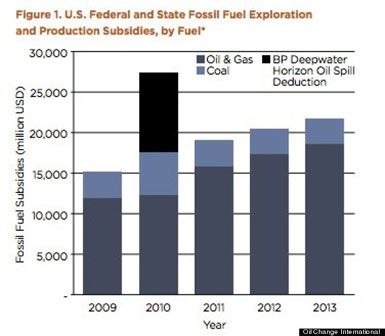Now that deep sea oil drilling projects are being cancelled across the world because of low petroleum prices, governments should use this opportunity to phase out fossil fuel subsidies, says the International Energy Agency (IEA).
And at least 27 countries are doing so, they say. It started in 2013, when fossil subsidies declined by $27 billion to $548 billion, while renewable energy support rose $11 billion to $96.5 billion. The process is accelerating with low oil prices.
"In the absence of subsidies, all of the main renewable energy technologies would be competitive with oil-fired plants," says Fatih Birol, Chief Economist at IEA.
IEA calculates that for every $1 that subsidizes renewable energy, $6 is spent to subsidize fossil fuels – precious funds that could be used for sustainable development.
Countries cutting subsides range from Mexico to Germany, from Morocco to Malaysia, mostly in the form of higher gas prices – everyone except the US, as usual! There’s no need to subsidize fossil fuel consumption when prices are so low, saving governments lots of money and leveling the playing field for renewable energy.
India, for example, has been spending 2.2% of GDP on fossil subsidies to keep electric and fuel prices artificially low.

Countries need to stop providing subsidies to stoke exploration and production – amounting to about $88 billion last year. The UK, for example, is considering incentives for drilling in the North Sea, and the US – the biggest subsidizer – has a new offshore oil leasing plan.
IEA has been fervently calling for an end to fossil subsides – that alone, would reduce global emissions 13% – while making it much easier for renewable sources to compete. It would also reduce air and water pollution and free up funding for the Green Climate Fund.
Efforts to cut emissions by using more renewable energy can’t do the job if fossil fuel use keeps growing, says IEA. If the status quo continues, global energy demand will rise 37% and carbon emissions 20% by 2040. That would lead to a 3.6°C (6.5°F) temperature rise – making catastrophic sea level rise, polar ice cap melt, water shortages and other severe effects inevitable.
To get fossil subsidies down faster, the Center for American Progress is promoting "SPARC Bonds," which would be repaid with savings from reduced subsidies. Read more:
